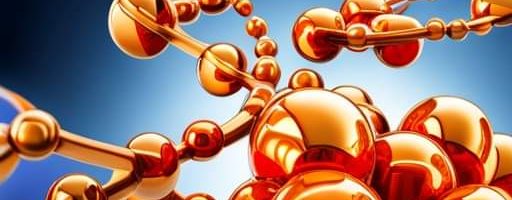In the Crespilho's group, our primary focus of study lies in miniaturized bioreactors. These miniature-scale devices offer numerous advantages, including enhanced control, increased efficiency, and reduced costs. By utilizing these bioreactors, we aim to investigate the chemical and physical properties of redox systems and redox biomolecules on solid surfaces.
One area of our research involves studying the behavior and characteristics of redox systems when immobilized on solid surfaces within the miniaturized bioreactors. We delve into the surface chemistry and structure to understand how these factors influence the redox reactions, electron transfer processes, and overall electrochemical behavior of the systems. This knowledge is crucial for the development of efficient and stable bioelectrochemical devices.
Furthermore, we are keenly interested in exploring the bioenergetics and technological implications of the properties we uncover. Our research aims to advance the understanding and application of bioenergetics, particularly in the production of biohydrogen and the capture of CO2. Biohydrogen holds promise as a clean and renewable energy source, while the capture of CO2 is essential for mitigating climate change.
Additionally, we focus on the development of biocells and fuel cells, which utilize redox systems and redox biomolecules to convert chemical energy into electrical energy. These devices have tremendous potential as sustainable energy sources with minimal environmental impact.
Moreover, we explore the application of miniaturized bioreactors in the development of multiplex biosensors. These biosensors offer simultaneous detection of multiple analytes, enabling rapid and accurate monitoring of various biological and environmental parameters. They have significant applications in fields such as healthcare, environmental monitoring, and food safety
Bioreactors Applied in Energy Conversion and Storage
Biological Fuel Cells, Biobatteries and Organic Batteries.
Bioreactors Miniaturization and Fundamental Bioelectrochemistry
Biofuel Cell Miniaturization, Modeling of Charge-Transfer Mechanisms of Enzymes, Bio-Electrocatalysis, Electrodes Materials and In Situ and Operando techniques.
Bioelectronics Devices
Biosensors and Emerging Biomimetic Materials.
Featured Publications
- Macedo, L. J. A.; Hassan, A.; Sedenho, G. C.; Crespilho, F. N. Assessing electron transfer reactions and catalysis in multicopper oxidases with operando X-ray absorption spectroscopy. Nature Communications, 11, 316, 2020.
- Sedenho, G. C.. Neckel, I. T.; Colombo, R. N. P.; Pacheco, J. C.; Bertaglia, T.; Crespilho, F. N. Investigation of Water Splitting Reaction by a Multicopper Oxidase through X-ray Absorption Nanospectroelectrochemistry. Advanced Energy Materials, v.12, n.47, 2202485, 2022.
- Crespilho, F. N.; Sedenho, G. C.; De Porcellinis, D.; Kerr, E.; Granados-Focil, S.; Gordon, R. G.; Aziz, M. J. Non-corrosive, low-toxicity gel- based microbattery from organic and organometallic molecules. Journal of Materials Chemistry A, 7, 24784-24787, 2019.
- Ali, M. A.; Hassan, A.; Sedenho, G. C.; Gonçalves, R. V.; Cardoso, D. R.; Crespilho, F. N. Operando electron paramagnetic resonance for elucidating the electron transfer mechanism of coenzymes. Journal of Physical Chemistry C, 123, 16058-16064, 2019.
- Macedo, L. J. A., Lima, F. C. D. A., Amorim, R. G., Freitas, R. O., Yadav, A., Iost, R. M., K. Balasubramanian, Crespilho, F. N. Interplay of non-uniform charge distribution on the electrochemical modification of graphene. Nanoscale, 10, 15048-15057, 2018.
- Macedo, L. J. A.; Crespilho, F. N. Multiplex Infrared Spectroscopy Imaging for Monitoring Spatially Resolved Redox Chemistry. Analytical Chemistry, 90, 1487-1491, 2018.
- Souza, J. C. P.; Silva, W.; Lima, F. H. B.; Crespilho, F. N. Enzyme Activity Evaluation by Differential Electrochemical Mass Spectrometry. Chemical Communications, 53, 8400-8402, 2017.
- Sales, F. C. P. F.; Iost, R. M.; Martins, M. V. A.; Almeida, M. C.; Crespilho, F. N. An intravenous implantable glucose/dioxygen biofuel cell with modified flexible carbon fiber electrodes. Lab on a Chip, 13, 468, 2013.
